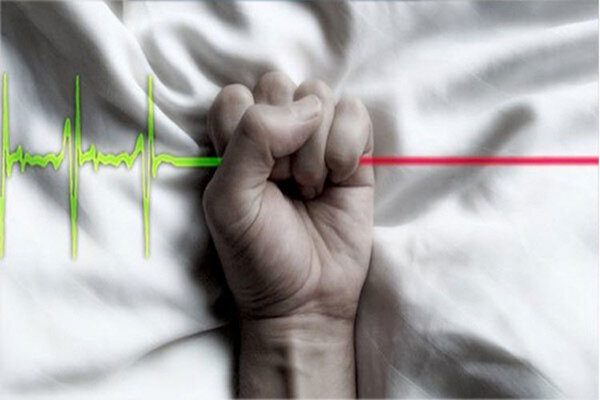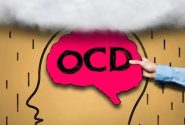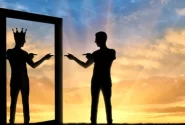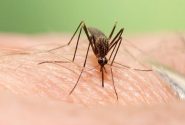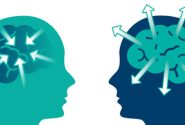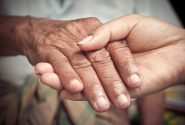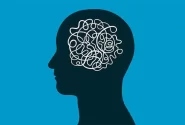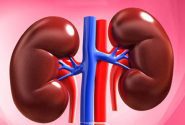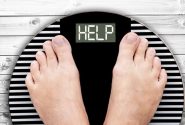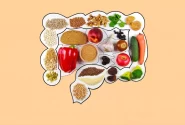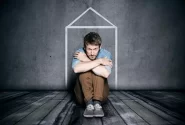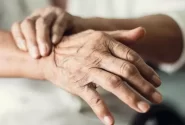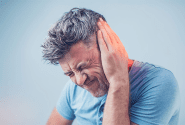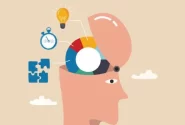به گزارش پایگاه خبری تحلیلی تسریر، به نقل از هلث دی نیوز، این گزارش نشان میدهد که در طول این دو دهه، بیش از ۴۷۰۰۰ آمریکایی بین ۱۰ تا ۱۹ سال به دلیل خودکشی جان خود را از دست دادند و سال به سال افزایش چشمگیری داشته است.
تیمی به سرپرستی کامرون اورمیستون، از موسسه ملی ایالات متحده در مورد سلامت اقلیت ها و نابرابری های بهداشتی، گفت که در میان دختران و نوجوانان اقلیت خودکشی افزایش شدید یافته است.
محققان در مطالعه ای که در ۲۹ مارس در ژورنال JAMA Network Open منتشر شد، نوشتند: «یک روند افزایشی کلی در تمام جمعیت شناسی مشاهده شد.
این یافته ها بر اساس داده های گواهی فوت فدرال از سال ۱۹۹۹ تا ۲۰۲۰ است. از نظر نژاد، جنسیت و وسایل خودکشی، برخی از روندها نگران کننده بوده است.
به عنوان مثال، در حالی که مرگ و میر ناشی از مصرف بیش از حد مواد مخدر (یا مواد دیگر) بین سالهای ۱۹۹۹ تا ۲۰۲۰ در بین تمام نوجوانان ۲.۷ درصد در سال افزایش یافته است، به ویژه در بین دختران سالانه ۴.۵ درصد افزایش یافته است.
این روند فقط در سالهای اخیر تسریع شده است: تیم اورمیستون گزارش داد که بین سالهای ۲۰۱۱ و ۲۰۲۰، خودکشیهای ناشی از مصرف بیش از حد مخدر ۱۲.۶ درصد در سال در میان نوجوانان دختر افزایش یافته.
آنها گفتند که همه اینها نشان می دهد که “نوجوانان ابزارهای کشنده بیشتری برای خودکشی پیدا می کنند که به افزایش مرگ و میر ناشی از آن کمک می کند.”
و در حالی که خودکشی با استفاده از اسلحه در بین پسران از سال ۱۹۹۹ تا ۲۰۲۰ ۵.۳ درصد در سال افزایش یافته است، این میزان در بین دختران با سرعت بیشتری (۷.۸ درصد در سال) افزایش یافته است.
به گفته محققان، اگرچه پسران نرخ خودکشی بالاتری نسبت به دختران داشتند، ولی “شواهد اخیر نشان میدهد که این مسئله ممکن است در حال کاهش باشد، زیرا نرخ خودکشی در میان نوجوانان دختر با سرعت بیشتری نسبت به نوجوانان پسر افزایش مییابد.”
با این حال، در میان بچه های اقلیت بود که چشمگیرترین و نگران کننده ترین نرخ خودکشی مشاهده شد.
به عنوان مثال، بین سالهای ۲۰۱۲ تا ۲۰۲۰، مرگ و میر خودکشی با استفاده از سلاح گرم در میان نوجوانان سیاهپوست سالانه ۱۴.۵ درصد افزایش یافت و روند مشابهی در میان نوجوانان اسپانیایی تبار و نوجوانان آمریکایی مشاهده شد.
تیم اورمیستون گفت: «افزایش نرخ خودکشی های اخیر با سلاح گرم در میان نوجوانان سیاه پوست، اسپانیایی یا لاتین تبار، و آمریکایی نگران کننده است.
چه چیزی باعث افزایش نرخ خودکشی می شود؟
دکتر رابرت دیکر، دستیار مدیر روانپزشکی کودک و نوجوان برای بیمارستان نورثول هلث زوکر هیلساید و مرکز پزشکی کودکان کوهن در گریت نک، نیویورک، با بررسی این یافتهها گفت: «متأسفانه، میتوانم بگویم که نتایج تعجب آمیز نبودند».
دیکر گفت که یکی از عواملی که باعث این امر میشود، فشاری که رسانه های اجتماعی بر کودکان وارد می کنند، است.
وی خاطرنشان کرد: از آنجایی که رسانه های اجتماعی به حوزه اصلی ارتباطات نوجوانان تبدیل شد، در آن زمان بود که اختلالات خلقی، افسردگی و خودکشی افزایش یافت.
دیکر اضافه کرد که رکود اقتصادی که خانواده ها را سال های تحت فشار قرار داده می تواند عامل دیگری باشد. همچنین نوجوانان در حال حاضر نسبت به دهه های گذشته با اضطراب بیشتری در مورد موفقیت تحصیلی روبرو هستند و سپس دوقطبی شدن فزاینده سیاسی جامعه آمریکا وجود دارد.
دیکر گفت: «از مطالعههای من در مورد نوجوانان، نگرانیهای زیادی درباره آینده سیاره ما و گرم شدن کره زمین، درگیریهای بین کشورها بیان شده است و من فکر می کنم که همه آنها باعث تشدید استرس شدیدی میشوند.
او معتقد است که جوانان اقلیت به دلیل عواملی مانند “نژادپرستی سیستمیک و محرومیت فرهنگی” و سهولت دسترسی به اسلحه در برخی جوامع، بیشترین ضربه را می بینند.
تیم اورمیستون خاطرنشان کرد که اغلب اوقات، اسلحهها بهطور یکسان در خانوادههای سفیدپوست و سیاهپوست بهطور ناامن در خانه نگهداری میشوند. این می تواند گاهی اوقات عواقب کشنده ای داشته باشد.
نویسندگان این مطالعه گفتند: «اطمینان از اینکه والدین جوانان در معرض خطر، در مورد ایمنی و شیوههای نگهداری اسلحه مشاوره میگیرند، ممکن است خودکشی با سلاح گرم جوانان را کاهش دهد.»
اطلاع رسانی بهتر (به عنوان مثال، برنامه های پیشگیری از خودکشی) و دسترسی به مشاوره سلامت روان می تواند به همه نوجوانان، به ویژه نوجوانان اقلیت در معرض خطر کمک کند.
برای مثال، محققان میگویند: «جوانان سیاهپوست اغلب بهجای نیاز به خدمات بهداشت روان، بهعنوان مشکلات رفتاری برچسبگذاری میشوند که میتواند منجر به شکست در شناسایی خطر خودکشی و ارائه مراقبتهای کافی شود».
داده های مطالعه تنها تا سال ۲۰۲۰، در آغاز همه گیری گسترش یافت. دیکر معتقد است که ممکن است اوضاع در سالهای بعد بدتر شده باشد.
وی گفت: فکر می کنم میزان اضطراب و افسردگی در جوانان در طی این سال ها افزایش یافته است و “اقدام به خودکشی و مراجعه به بخش های اورژانس در بین نوجوانان افزایش یافته است. بنابراین، نمی توانم به طور قطعی بگویم، اما فکر می کنم اگر مسئله جدی گرفته نشود، ما شاهد وخامت بیشتری خواهیم بود.”
U.S. rates of suicide by all methods rose steadily for adolescents between 1999 and 2020, a new analysis shows.
During those two decades, over 47,000 Americans between the ages 10 and 19 lost their lives to suicide, the report found, and there have been sharp increases year by year.
Girls and minority adolescents have charted especially steep increases in suicides, said a team led by Cameron Ormiston, of the U.S. National Institute on Minority Health and Health Disparities.
“An overall increasing trend was observed across all demographics,” the researchers wrote in a study published March 29 in the journal JAMA Network Open.
The findings were based on federal death certificate data from 1999 through 2020.
By race, sex and means of suicide, some troubling trends stood out.
For example, while deaths from drug (or other substance) overdose rose by 2.7% per year between 1999 and 2020 among all adolescents, it rose by 4.5% per year among girls, specifically.
That trend has only accelerated in recent years: Between 2011 and 2020, suicides by overdose jumped 12.6% per year among female adolescents, Ormiston’s group reported.
All of this suggests that “adolescents are finding more lethal means of poisonings, contributing to an increase in deaths by suicide,” they said.
And while suicides using guns rose 5.3% per year during 1999 to 2020 among boys, it increased even more rapidly (7.8% per year) among girls.
Although older teen boys have traditionally had higher suicide rates than girls, “recent evidence suggests these gaps may be closing as suicide rates are increasing more rapidly among female adolescents than male adolescents,” the researchers said.
However, it was among minority kids that the most dramatic, troubling increases were seen.
For example, between 2012 and 2020, suicide deaths using firearms jumped 14.5% per year among Black adolescents, with similar trends noted among Hispanic, American Indian/Alaska Native and Asian American adolescents, the study found.
“The recent, rapidly accelerating rates of firearm suicide among Black, Hispanic or Latino, and American Indian and Alaska Native adolescents are concerning,” Ormiston’s group said.
What’s driving the rise in these tragedies?
Dr. Robert Dicker is associate director of child and adolescent psychiatry for Northwell Health’s Zucker Hillside Hospital and Cohen Children’s Medical Center in Great Neck, N.Y. Reviewing the findings, he said that, “Sadly, I could say that the results were not surprising.”
As to factors driving the trends, Dicker said one obvious culprit is the pressures put on kids by social media.
“As social media became a primary area of teenage communication, that is when there was an increase in mood disorders, depression and suicide,” he noted.
Economic downturns that strained families during the years covered by the data could be another factor, Dicker added. Adolescents are also facing more anxieties over scholastic achievement now than in decades past.
Then there’s the increasing political polarization of American society.
“From my readings and from my work with teenagers, a lot of concern has been expressed around the future of our planet and global warming, conflicts between countries, and again the polarization here in the United States,” Dicker said. “I think they all add to tremendous stress.”
Minority youth are hardest hit, he believes, because of factors such as “systemic racism and cultural disenfranchisement,” and the ease of access to guns in some communities.
Too often, guns are stored unsafely at home in white and Black families alike, Ormiston’s team noted. That can lead to impulsive decisions by troubled youth, with sometimes fatal consequences.
“Ensuring the parents of at-risk youth are counseled on gun safety and safe storage practices may reduce youth firearm suicide,” the study authors said.
Better outreach (for example, school-based suicide prevention programs) and access to mental health counseling could help all adolescents, but especially at-risk minority teens.
For example, “Black youth are often mislabeled as having behavioral problems rather than requiring mental health services, which can lead to failures in identifying suicide risk and providing adequate care,” the researchers said.
The study data only extended to 2020, at the beginning of the pandemic.
Dicker believes things may have only gotten worse in the years since.“I think the rates of anxiety and depression in youth have increased over these years,” he said. “Suicide attempts have increased in this adolescent population. Visits to emergency departments have increased within this population. So, I can’t say for sure, but I think if this study was extended, I think we would see even further worsening.”
تسریر مراقب سلامتی شماست!

